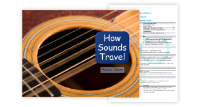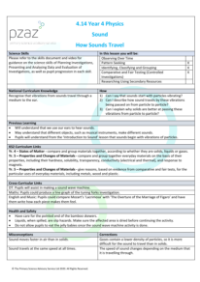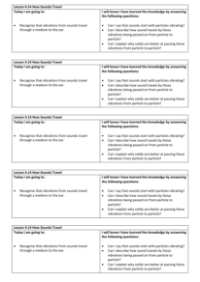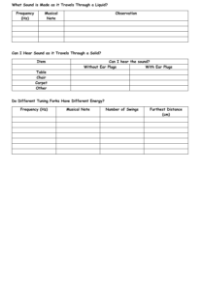How Sounds Travel - Teacher Explanation

Science Resource Description
Welcome to lesson 4.14 on 'How Sounds Travel', which is part of the Year 4 Unit on Sound as specified in the National Curriculum. This lesson aims to help pupils understand that sound vibrations travel through various mediums to reach the ear. For the practical activities, we will be using bamboo skewers, so it's important to handle them with care due to their pointed ends. The lesson also involves the use of water and jelly babies, which should not be consumed by the pupils as they will be handling them during the experiments. The lesson provides cross-curricular opportunities, incorporating elements of Design and Technology by creating a sound wave machine, Mathematics through graphing experimental results, and an exploration of music and English by comparing classical compositions.
The first activity demonstrates how sound vibrations are transmitted through different mediums using a homemade sound wave machine made from bamboo skewers, masking tape, and jelly babies. Pupils will observe how tapping one end creates a ripple effect, visually representing how vibrations travel. The lesson continues with experiments to test sound transmission through liquids, solids, and gases. Pupils will explore how sound travels through water using a bowl and a metal utensil, and how vibrations can be seen and felt when a tuning fork is dipped into water. They will also investigate sound transmission through air using a paper and tambourine setup and create a model ear with cling film and salt to demonstrate the effect of sound on the eardrum. Finally, an experiment with tuning forks and ping pong balls will prove that sound can travel through solids. This comprehensive lesson is designed to be interactive and engaging, ensuring that pupils gain a clear understanding of the principles of sound travel.






